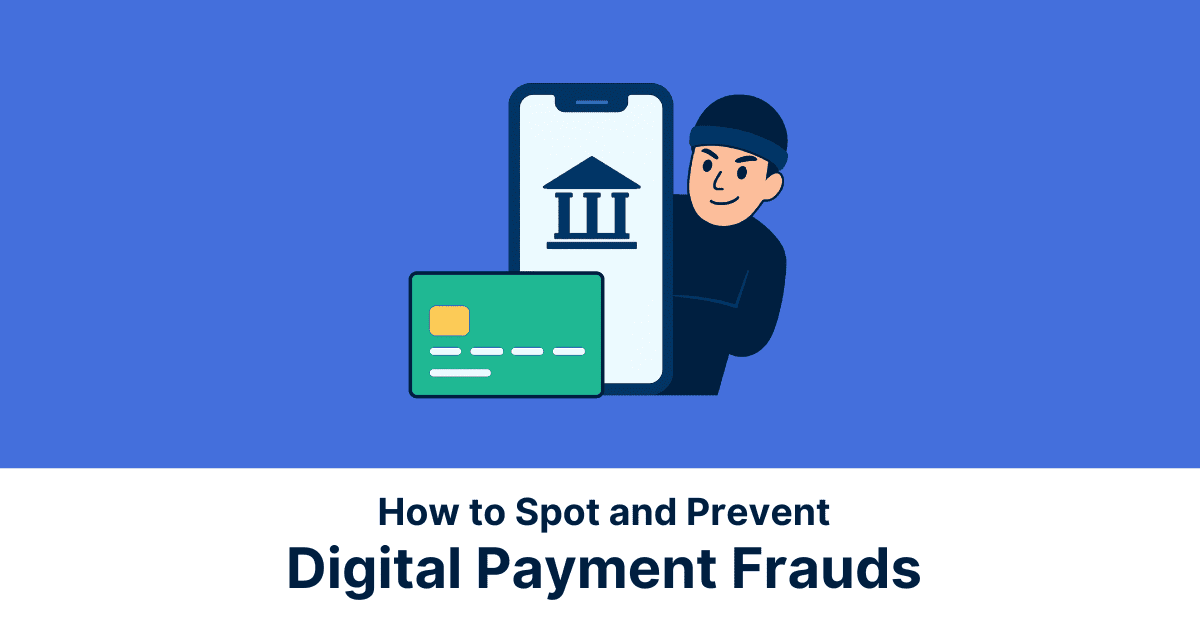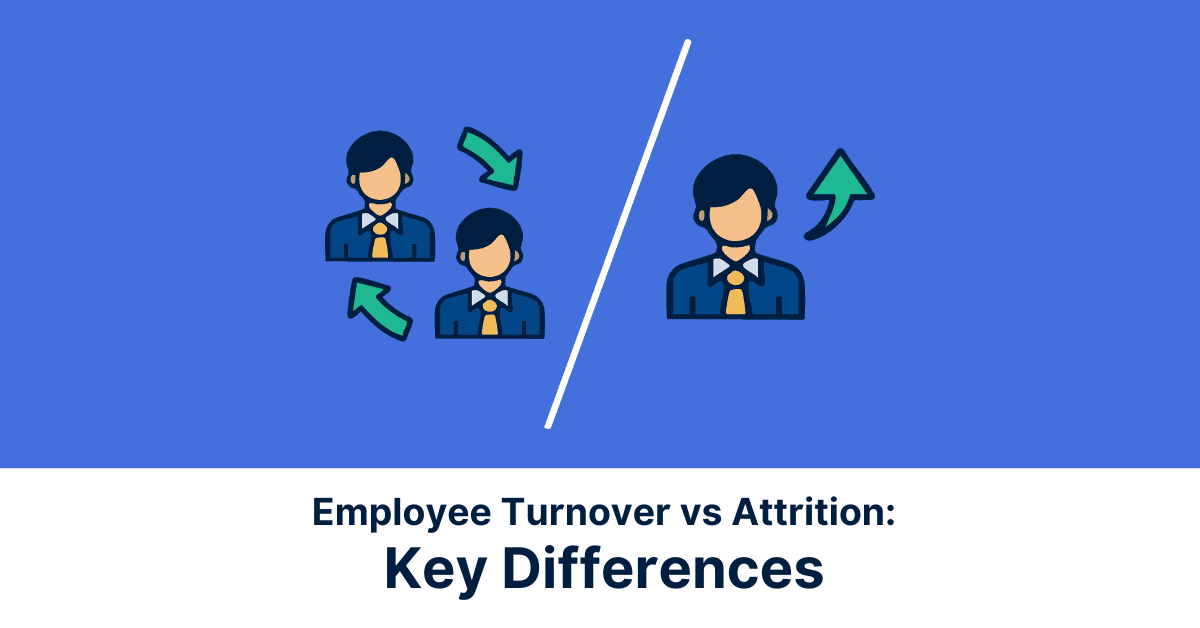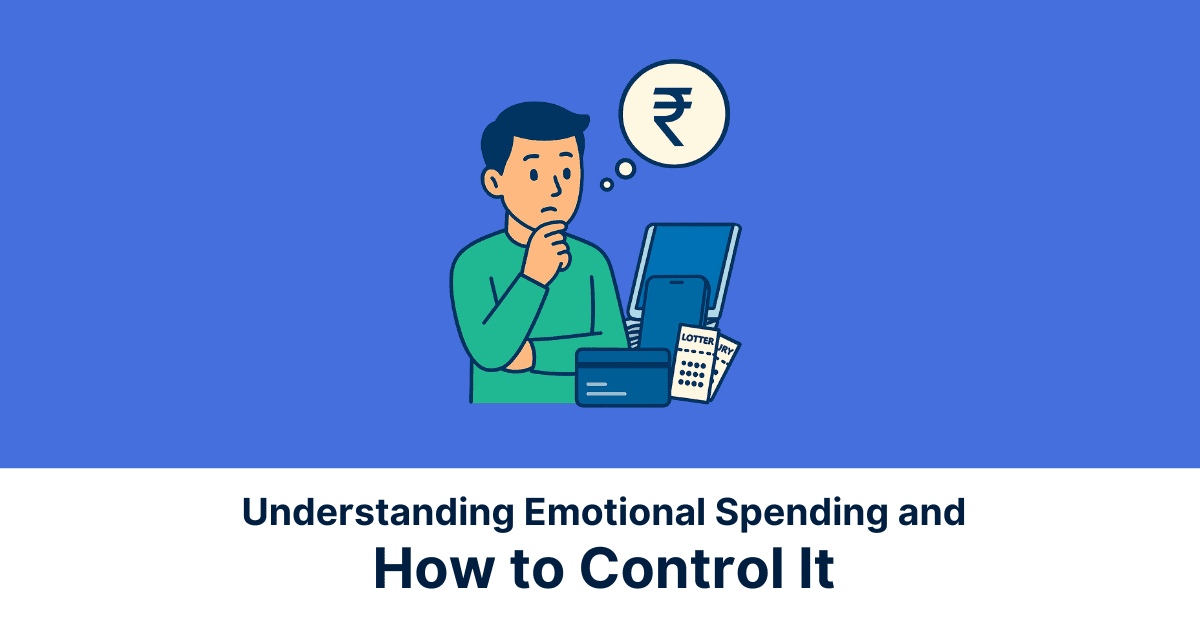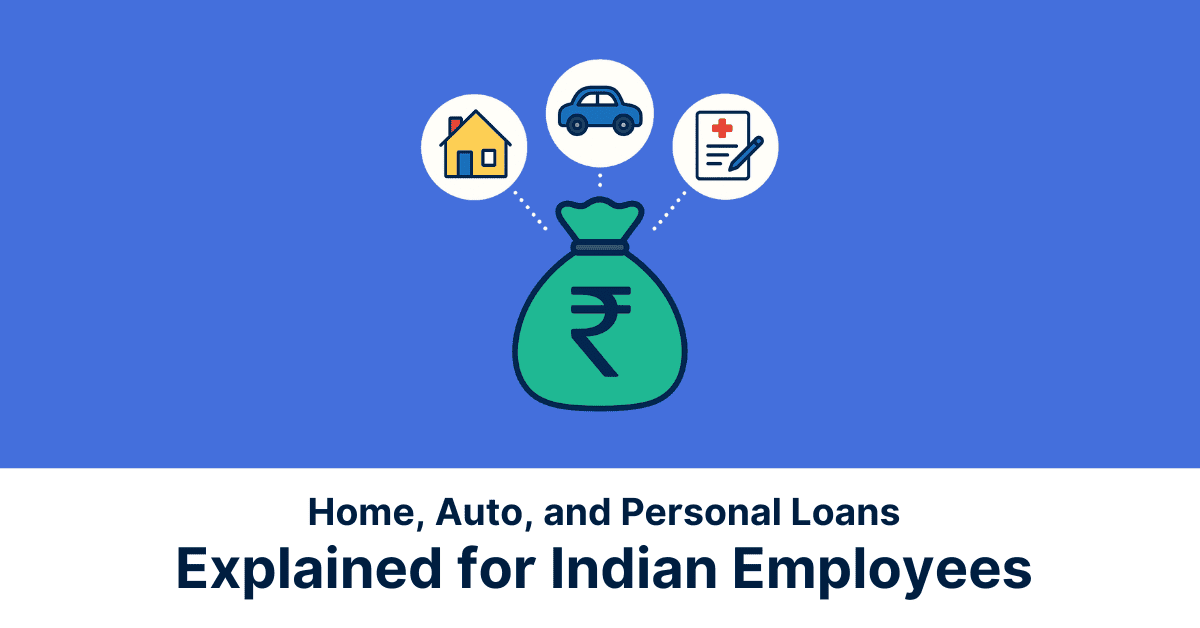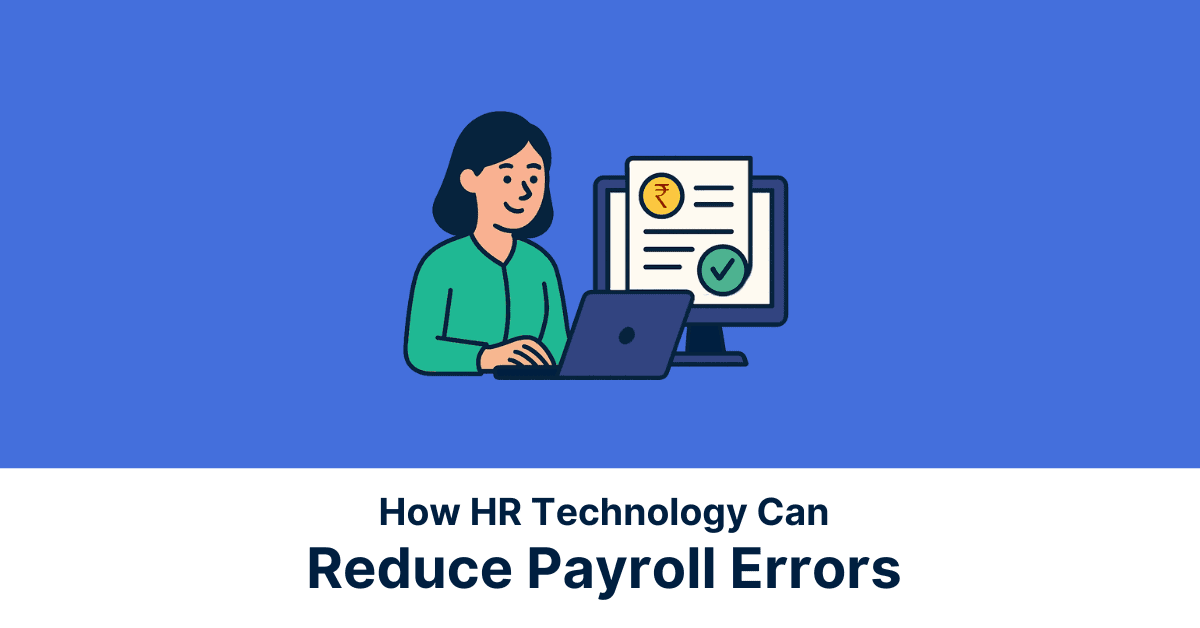India’s digital payment landscape has transformed rapidly in the past decade. UPI, mobile wallets, and instant net banking have made transactions faster, simpler, and accessible to millions. But with this convenience comes a new challenge – online payment frauds.
According to NDTV, Digital Fraud, Cybercriminals Stole Rs 23,000 Crore From Indians In 2024. Fraudsters now use sophisticated tricks like phishing, fake merchant apps, and SIM swaps to steal money and data from unsuspecting users.
In a mobile-first economy, awareness is your first line of defense. This guide will help you understand what digital payment fraud is, how to detect it, and the steps you can take to prevent falling victim so you can enjoy the benefits of cashless payments without the risks.
What Is Digital Payment Fraud?
Digital payment fraud refers to any illegal or unauthorized activity where cybercriminals exploit online transaction systems to steal money or sensitive data.
In India, these scams target popular platforms such as Unified Payments Interface (UPI), mobile wallets, net banking, and debit/credit card payments.
Fraudsters often rely on:
- Social engineering – manipulating victims into sharing confidential details.
- Cloned apps or payment gateways – fake interfaces designed to capture sensitive data.
- Phishing attacks – luring users into entering credentials on fraudulent websites.
For example, a criminal might send a QR code claiming to “receive payment,” which actually withdraws money from the victim’s account once scanned.
With the growing volume of digital transactions, criminals are constantly finding new ways to exploit vulnerabilities making online payment fraud detection and prevention essential for every user in today’s cashless economy.
Most Common Types of Digital Payment Frauds
Fraudsters in India are using increasingly creative methods to trick users into revealing sensitive information or authorizing fraudulent transactions. Understanding these scams is the first step in protecting yourself.
UPI Scams (Request Money & Fake QR Codes)
UPI scams often involve fraudsters sending a “request money” notification under the pretext of refunds, prize winnings, or emergency help.
Another common trick is sharing a fake QR code that, when scanned, debits money from your account instead of crediting it. These scams exploit the fact that many users don’t realize UPI QR codes can be used to withdraw money, not just receive it.
Always verify who you are transacting with, and never authorize a request unless you initiate it.
Fake Merchant or Payment Apps
Cybercriminals create lookalike payment apps that mimic trusted platforms like Google Pay or PhonePe. The interface appears identical to the real one, but the app is built to capture your personal and banking details.
These fake apps may even appear in search results or ads on unofficial websites.
To avoid falling prey, download apps only from the Google Play Store or Apple App Store, verify the developer’s name, and check user reviews carefully before installation.
Phishing and SMS/Email Scams
Phishing attacks involve sending deceptive emails, SMS messages, or WhatsApp links designed to look like they’re from banks, payment services, or government agencies.
These links lead to fake login pages where users unknowingly enter their credentials. Once obtained, scammers can drain accounts or make unauthorized transactions.
Always check the sender’s email address, avoid clicking suspicious links, and access your bank or UPI app only via official channels.
SIM Swapping and OTP Theft
In a SIM swap, fraudsters trick your mobile operator into issuing a duplicate SIM card. Once activated, they gain control over your phone number, intercepting OTPs and verification codes.
With this access, they can reset account passwords, approve transactions, and take full control of your banking services.
To prevent this, set a SIM lock PIN with your operator, monitor sudden loss of network, and contact your telecom provider immediately if you suspect unauthorized activity.
How to Detect Fraud in Online Transactions
Fraudsters often leave behind warning signs before or after an unauthorized payment.
Spotting these early gives you the best chance to stop further misuse and recover funds quickly.
Transaction Alerts You Didn’t Initiate
If you receive an SMS, email, or in-app notification for a payment you don’t remember making, treat it as an urgent warning.
Fraudsters sometimes test accounts with small transactions before attempting bigger withdrawals.
What to do:
- Review UPI history, wallet logs, and bank statements for suspicious entries.
- Enable real-time transaction alerts so you’re notified instantly.
- Even small, unexplained deductions can indicate your account has been compromised.
- Immediately block your card or UPI account and contact your bank’s helpline to freeze access.
Login Notifications from Unknown Devices
Most banks and payment apps alert you when your account is accessed from a new device.
If you didn’t initiate the login, your credentials may already be in the hands of fraudsters, often obtained through phishing or data leaks.
Action steps:
- Change your password right away.
- Enable two-factor authentication (2FA) for all payment apps.
- Use the “Log out from all devices” option to cut off unauthorized access.
- Review recent activity and report suspicious logins immediately to your bank.
Poorly Designed or Cloned Payment Interfaces
A genuine payment app or site will have secure encryption (HTTPS), professional design, and consistent branding.
Fraudulent versions often have:
- Spelling errors or poor grammar
- Blurry logos or mismatched colors
- Unusual checkout flows
- Redirects to strange URLs
How to stay safe:
- Type the official URL yourself or use bookmarks.
- Download apps only from Google Play or Apple App Store.
- Pause and verify before entering payment details. Fraudsters count on you being in a hurry.
Online Fraud Prevention Techniques Everyone Should Follow
Digital transactions can be highly secure but only if you follow strict security habits. Fraud prevention is less about complex technology and more about consistent, everyday practices that leave no room for scammers to exploit.
Use Secure and Verified Apps Only
Many scams begin with downloading an app from an unofficial source or a malicious link. Fake payment apps are designed to capture your login credentials and card details the moment you enter them.
Best practices:
- Download payment apps only from Google Play or Apple App Store.
- Verify the developer name matches the official provider.
- Read recent reviews to spot complaints about suspicious activity.
- Avoid clicking app download links sent via SMS, email, or ads on social media.
- Keep apps updated to fix security vulnerabilities that scammers exploit.
Don’t Share UPI PINs, OTPs, or Personal Details
No bank, RBI official, or payment platform will ever ask for your UPI PIN, OTP, CVV, or full card number over a call, text, or email.
Fraudsters often create fake urgency, like claiming your account will be blocked to push you into sharing these details.
What to remember:
- Hang up immediately if anyone asks for sensitive information.
- Use official bank helplines for verification.
- Remember: even customer care agents don’t need your UPI PIN to resolve issues.
Enable Transaction Limits and App Locks
Restricting the amount per transaction is a simple but powerful safeguard.
Quick tips:
- Set low daily transaction limits in your UPI/net banking settings.
- Enable biometric authentication (fingerprint/Face ID) or strong passwords for app access.
- Turn on two-step approvals for payments, so every transaction needs additional verification.
Educate Family Members About Frauds
First-time digital payment users, especially elderly family members are at higher risk.
How to help:
- Show them real examples of scam messages.
- Encourage them to verify payment requests with you before acting.
- Teach them to check for secure sites (HTTPS) and official apps.
What to Do If You’re a Victim of Digital Fraud
If you suspect or confirm that you’ve been targeted by an online payment scam, acting quickly is critical. Every minute counts when it comes to limiting financial losses and recovering stolen funds.
Report Fraud to Your Bank Immediately
Contact your bank’s 24/7 helpline or use their mobile banking app to report the unauthorized transaction.
Most banks can temporarily block your account or card to prevent further misuse.
Have these details ready:
- Your account number or customer ID
- Date, time, and amount of the fraudulent transaction
- Any supporting evidence like screenshots or transaction IDs
Tip: If you’re using UPI, also reach out to your UPI app’s support team. Many banks have dedicated fraud response units that prioritize early-reported cases.
File a Complaint on the Cybercrime Portal
In India, the official platform to report online financial fraud is the National Cyber Crime Reporting Portal: cybercrime.gov.in.
Steps to follow:
- Create an account or log in.
- Select “Report Other Cybercrimes” and choose Financial Fraud.
- Fill in transaction details, attach supporting files, and submit.
You can also visit your nearest cybercrime police station for offline reporting.
The sooner you file the complaint, the higher the chance of recovering your money, especially if the funds are still in the scammer’s account.
Future of Fraud Detection: Role of AI and ML in Payments
The next big leap in online payment fraud prevention is being driven by artificial intelligence (AI) and machine learning (ML).
Payment providers, banks, and fintech platforms are increasingly using these technologies to analyze millions of transactions in real time, flagging anything that looks unusual.
Here’s how AI and ML are changing fraud detection:
- Behavioral analysis: Identifying spending patterns for each user and spotting anomalies instantly.
- Device fingerprinting: Recognizing the devices you usually transact from and blocking suspicious ones.
- Predictive alerts: Using historical fraud data to predict potential scam attempts before they happen.
These tools help stop fraud before money even leaves the account, something traditional security checks often fail to do.
As digital transactions in India continue to grow, AI-powered monitoring will become a standard feature, offering users faster detection and stronger protection.
Conclusion
Digital payments have made life faster and more convenient, but they’ve also opened the door to new forms of fraud.
By understanding the most common scams, learning how to detect suspicious activity, and following proven prevention practices, you can greatly reduce your risk.
Stay vigilant, educate those around you, and act quickly if you suspect foul play, early reporting often makes the difference between recovery and loss.
As India’s cashless economy expands, awareness and proactive protection will be your strongest defenses against online payment frauds.
Security begins with informed, cautious, and alert users.
*Disclaimer:
The information contained herein is not intended to be a source of advice concerning the material presented, and the information contained in this article does not constitute financial advice. The ideas presented in the article should not be used without first assessing your financial situation or without consulting a financial professional.
